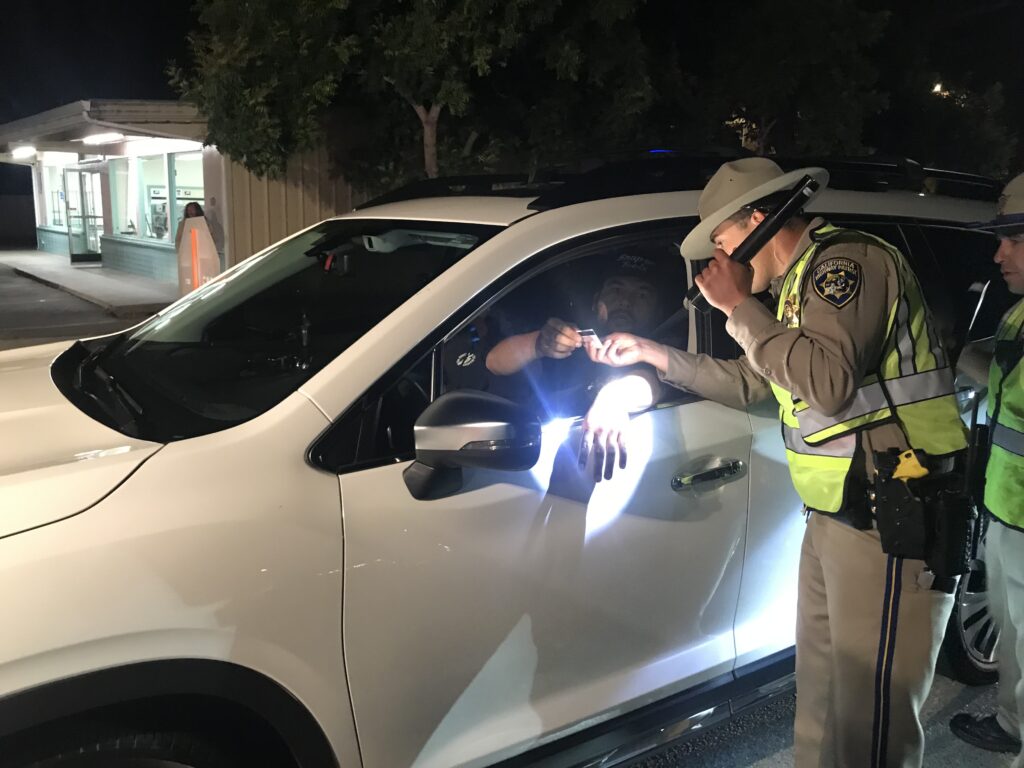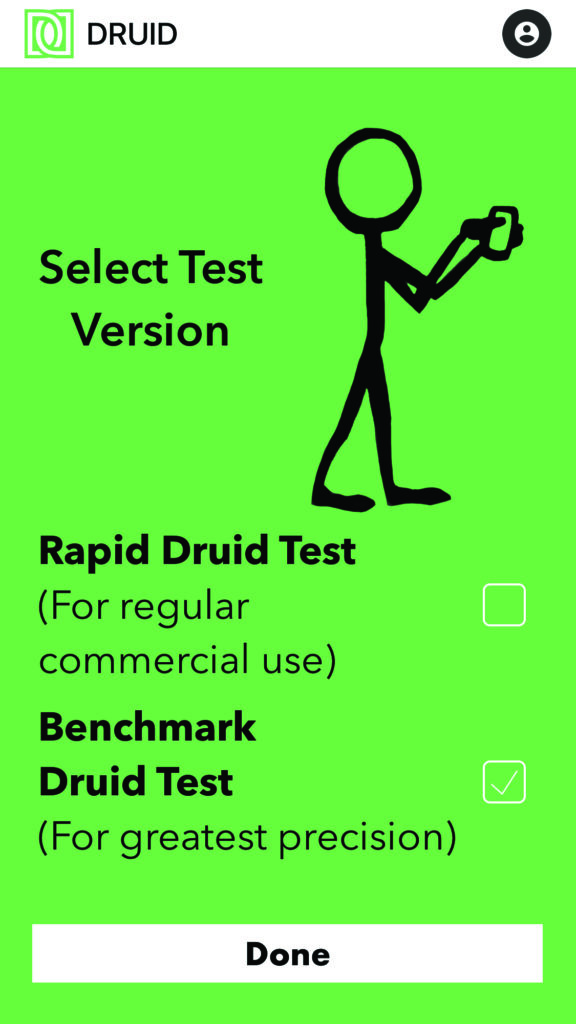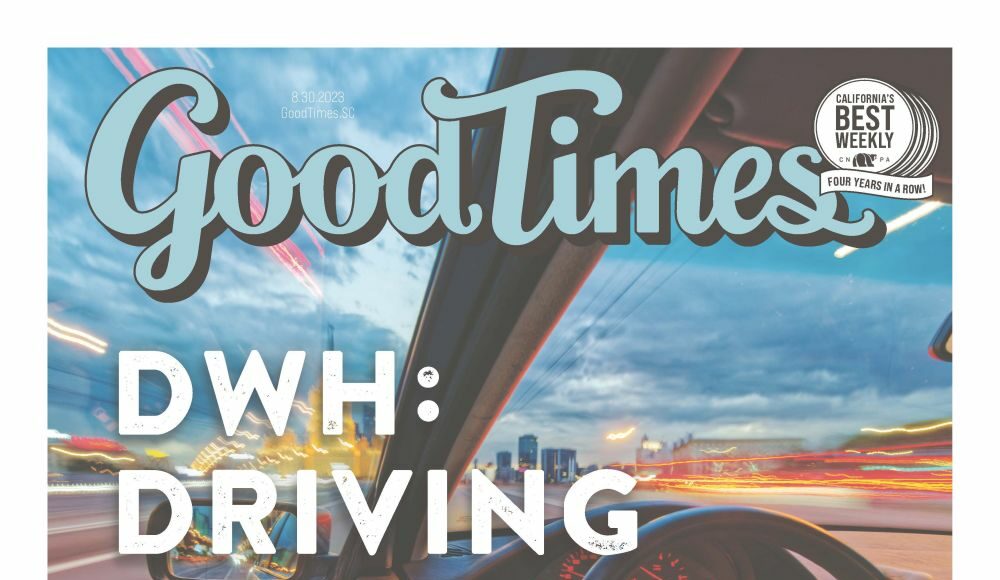The new wild west of driving high… it’s a minefield out there
When I was a student at UCSC in 1968, my roommate and I bought a pound of Panama Red in San Diego. Afterwards, we had no money left and for two days lived in an art house movie theater that was running a round-the-clock horror movie marathon for $1 a day.
In two days, we sold enough weed in the theater to head back to Santa Cruz. After two days of no sleep, and smoking Panama Red continuously, we left at midnight. On Highway One in Oxnard, a cop pulled me over.
I said, “What seems to be the problem officer?”
“You were driving seven miles an hour.”
The CDC reports that 48.2 million Americans used marijuana at least once in the past year. One in eight high school drivers reported driving after smoking at least once during the past month.
The California Highway Patrol (CHP) is tasked with the extraordinarily important and difficult task of keeping impaired drivers off the road, but in the case of cannabis impairment, they have been dealt a legally empty hand.
An 0.08% alcohol level in your blood is the legal bar for a DUI. To smoke weed while driving is illegal—it’s an infraction—but aside from having a big fatty smoldering in the ashtray, when does the law kick in that you are too high to drive?
The trouble is, since everyone responds to weed differently, and science hasn’t come up with a way to measure cannabis-driving impairment yet, there is no metric for cannabis-DUI set in law. For now, the courts are not buying the idea that field sobriety tests for alcohol are proof of impairment for cannabis. According to the National Organization for the Reform of Marijuana Laws (NORML) website, courts from Massachusetts to California have decreed that field sobriety tests for alcohol are not admissible in cannabis cases.
You’ve got to prove impairment beyond a reasonable doubt. Prominent Santa Cruz cannabis defense attorneys tell me that even expert impairment witnesses often admit under oath that given the current science, they can’t prove impairment beyond doubt.
So how do we use psychotropics to expand our world and then get home safe and sound? How do we get that 18-year-old kid who was driving 7 mph to pull over and sleep it off? How safe is it to drive high?
Santa Cruzans come together to weigh in on this issue.
THE CHP’S STORY
My first research stop was at the California Highway Patrol office on Soquel Drive just off of Freedom Boulevard. My predisposition to be wary of cops was blown away by how gracious and accommodating they all were.
I was granted an interview with Officer Murillo, who tells me, “Getting impaired drivers off the road is our bread and butter.”
CHP Officer Murillo: We’re looking for impaired driving, including impairment from cannabis, such as swerving, can’t keep your vehicle in its lane, driving too slow, you’re stopped at a green light, or you drive in an aggressive manner. The cue we really look for is erratic driving. People speed up, slow down, make a right turn out of the blue, drive without headlights at night.
Richard: But how do you tell when someone is high on weed? I’ve been a pot head for almost 60 years, and I can’t always tell when someone is high. My wife says she can’t tell when I’m high.
Officer Murillo: We take a 26-week course. We have experts who can identify cues. The studies for cannabis impairment are all on the website of the National Highway Traffic Safety Administration (NHTSA.) They have metrics on there, they have numbers. The website NHTSA is where you’ve got to go if you want the science behind what we do.
Cool! The science behind measuring cannabis impairment for the CHP is on the NHTSA website! I pull up the National Highway Traffic Safety Administration’s website and find their Drug and Alcohol Crash Risk Study. Here is what the NHTSA study says regarding cannabis and driving:
“For the active ingredient in marijuana, … there was no indication that it significantly contributed to crash risk. The adjusted odds ratios for THC were 1.00, 95 percent, indicating no increased or decreased crash risk.”
Richard: The CHP heavily promotes the idea that people should drive slower, “Slow down and live!” NORML makes the case that pot not only makes people drive slower and more carefully, but that studies show, at low doses, it does not impair driving. They even cite studies that find at microdoses, it can actually improve some individuals’ driving. Honestly Officer Murillo, I believe I am one of those individuals.
Officer Murillo: I can’t 100% agree with that. Any drug can make you drive slower. I pull people over who are going 40 miles an hour on the freeway. Sometimes they’re on heroin. There is a YouTube Video on the NHTSA website which is backed by scientific research.
I gotta admit, the NHTSA website video is far cooler than I had expected.
Four young folks are toking up while packing a car with camping gear. They get in the car to head off on their trip and discover they are all too high to drive, so they set up their campsite in front of their house and high five each other.
But the video does make the life-or-death point, “If you feel too high to drive, don’t.”
Richard: What makes you decide to bust a particular person for driving high? Is there a metric you can use, like the 0.08% impairment alcohol level?
Officer Murillo: No, there is no metric. We don’t have numbers, we just go off our training and experience for cues of impaired driving, and from there we look for additional cues such as red and watery eyes, when you ask for their ID they fumble with their wallet. They give you another card rather than their ID, things like that.
We don’t grab a measurement and say, “OK, you’re DUI”, especially with cannabis. We look for specific cues, like eye movement, that give us the power of detaining. We base it off what we see and observe in the field to get to probable cause.

REALLY, THAT’S IT?
I asked a prominent Santa Cruz cannabis defense attorney, “The CHP can get to probable cause by how your eye moves? Whether or not you go to jail depends entirely on the officer who is eyeballing you?”
The attorney says, “Yeah, that’s about it.”
A new study (2021) by researchers from the University of California at San Diego published in the journal JAMA Psychiatry concludes, “…trained police officers are frequently unable to discriminate between those who are under the influence of THC and those who are not based upon subjects’ performance on field sobriety tests.”
Welcome to the wild west of driving high.
Officer Murillo invites me to join his department at their Friday night Sobriety Checkpoint on Capitola Road and 17th Avenue.
They have eight large Pizza My Heart pizzas and offer me a piece. I stay for an hour and see them bust one guy for driving drunk, no one for being high on weed. I know there were people there who were at least a little high on weed, because I was.
PLEASE LORD, CAN I COME DOWN?
If I know I’m too high to drive, how will I know when I’m ready to drive? Cannabis hits everyone differently. The Mental Health Foundation reports:
- moking or vaping peaks at around 10 minutes after inhaling and lasts 1 to 3 hours.
- High dosage edibles can be as dangerous behind the wheel as heroin.
The next day you will be screaming into the mirror, “What were you thinking? You are never coming down!” I’m not putting edibles down, they are way healthier for your lungs, but if you drive somewhere and take edibles, we’re all hoping you’ll forget where you parked your car. You probably will.
The absolute necessity to keep edibles from getting behind the wheel is eloquently spoken by Santa Cruz Comedy Impresario DNA (he’s a pretty big fucking deal).
“If you’re doing dabs or edibles you’re not only risking your life, you’re endangering everyone else as well. If you’re baked, stay off the road. Especially in Santa Cruz, the little Amsterdam by the sea, whose main entry is the most nefarious highway invented, please, go to the beach and sit for a few hours before getting in the car.”
HOW HIGH IS HIGH?
To deter impaired driving, five states—Illinois, Montana, Nevada, Ohio and Washington—have set specific limits for THC between two and five nanograms per milliliter of blood. That amount is crazy low.
Studies published by Nature Scientific Reports, 2022, find no evidence that drivers whose blood samples tested in that range are more likely to cause a traffic accident.
According to the journal Accident Analysis and Prevention, people who rarely smoke weed can be quite dangerous if they toke and drive, and people who smoke a lot of weed are virtually unaffected by taking a couple of tokes. The American Journal of Addictions, 2009, published a study that indicates some individuals might actually drive better on cannabis.
A Santa Cruz cannabis defense attorney tells me, “So many people are daily smokers, and you almost wouldn’t want to be riding with them if they haven’t smoked. No shit, for some of them, you want them to feel at ease…Alcohol gives you that false bravado. Cannabis, if anything, does make you more cautious.”
There is a point of microdosed self-medication with cannabis that can make for a more measured decision. If I see a light turn yellow and I’m straight, I might think, “I can make it.” For a yellow light after one toke, I might be more defensive, “I’ve got time to stop.” High, I will change lanes less. A small amount of herb does not make me feel impaired, it makes me feel repaired.
No question, alcoholic driving is bad news. Alcohol mixed with cannabis is exponentially worse (American Journal on Addictions 2022).
Two to five nanograms/ml of THC in your blood may not (or may) make you an impaired driver, but that is a very low high. Five nanograms of THC/ml is like taking a gummy measured to have less than 10 mgs of THC.
THANK GOD, THERE’S AN APP
If you are a techie, there is an impairment test app called Druid that you can download from the Apple App Store onto your iPhone. The first 14 days are free and then it’s $1.99 per month. It’s a little three-part video game that takes about three minutes to play. To measure impairment, the app includes three divided-attention tasks that measure reaction time, hand-eye coordination and time-estimation accuracy. Another assesses balance.
You set a baseline score when you’re straight, and then when you’re high you play the game again and it tells you how far off you are from your straight score. The idea is to get as low a score as possible.
Both NORML and John Hopkins University researchers praise Druid for being an effective monitor of impairment. I had a young UCSC student try the app stoned and he scored 32, rated Excellent. I played the game sober and got a 67, rated Extremely Poor.
I had a couple of 20-somethings try it sober, and then try it very high, and while results were mixed, the app did indicate impairment when the young folks were super-stoned. I find the Druid impairment app difficult to negotiate, but then, I have old-fogey-disease when it comes to tech.
The young UCSC student tells me, “A small amount of weed relaxes me, I can sink into my seat and focus on driving defensively. But if I smoke more than a tiny amount, I get anxious and flustered. I gotta stop and walk it off if there’s even a little bit too much.”
GETTING THE BIG PICTURE
The NHTSA website says that multitasking is a key component of safe driving: that’s what makes being high while driving an issue.
I agree.
Weed gives you great focus on detail, but micro-vision is not what’s needed on the road. I can’t smoke weed when I perform standup comedy because I need macrovision on stage. I need to take in the whole crowd, not the guy with the lizard in the front row. Like standup comedy, driving is a big picture game. If I am focusing too much on detail, I’m not ready to drive.
Comedian George Carlin said he would first write his jokes sober, then go back and edit them high. I wrote this article sober, and now I’m getting high to edit typos. Now the thought of driving scares me to death. I’ll do yoga and listen to the rain. This is great weed, Santa Cruz weed. I ain’t going nowhere.
















The Druid app assesses cognitive-motor impairment by measuring cognitive-motor behaviors (e.g., reaction time). Research at Johns Hopkins found that Druid is sensitive enough to distinguish different levels of impairment from different amounts of THC a person consumes. (https://pubmed.ncbi.nlm.nih.gov/34049452/)
I am sorry Brad that you were hit by a car that was entering a weed shop. I was in favor of legal marijuana years ago. BUT driving while high is beyond stupid and irresponsible.
I have no desire for it, but understand why many do. That being said, it should never be used while driving . Anything !
I am so stunned by Richard Stockton’s premise that somehow driving while high isn’t always bad, I hardly know where to begin. How about we say that if you have consumed any amount of cannabis you ought to stay off the road? What gives anyone the right to take risks with other people’s lives?
I think it’s a really bad idea to leave it up to someone who is high to decide if they are competent to get behind the wheel of 4000 pounds of rapidly moving, potentially lethal metal. At what point is your judgment so impaired that you can’t reliably tell if your judgement is too impaired to drive?
From what he says in this article, Mr. Stockton routinely drives stoned. I think he lucky to have never caused death or injury, not smart because he thinks he thinks he can tell the difference between “impaired” and “repaired”. Perhaps a person who drives better when intoxicated by cannabis than when sober shouldn’t be driving at all.
If science hasn’t yet figured out a way to determine a “safe” amount of cannabis to consume when driving, those who like to get high should take the high road and stay off the road while high. Just because lots of people do something doesn’t make it right.